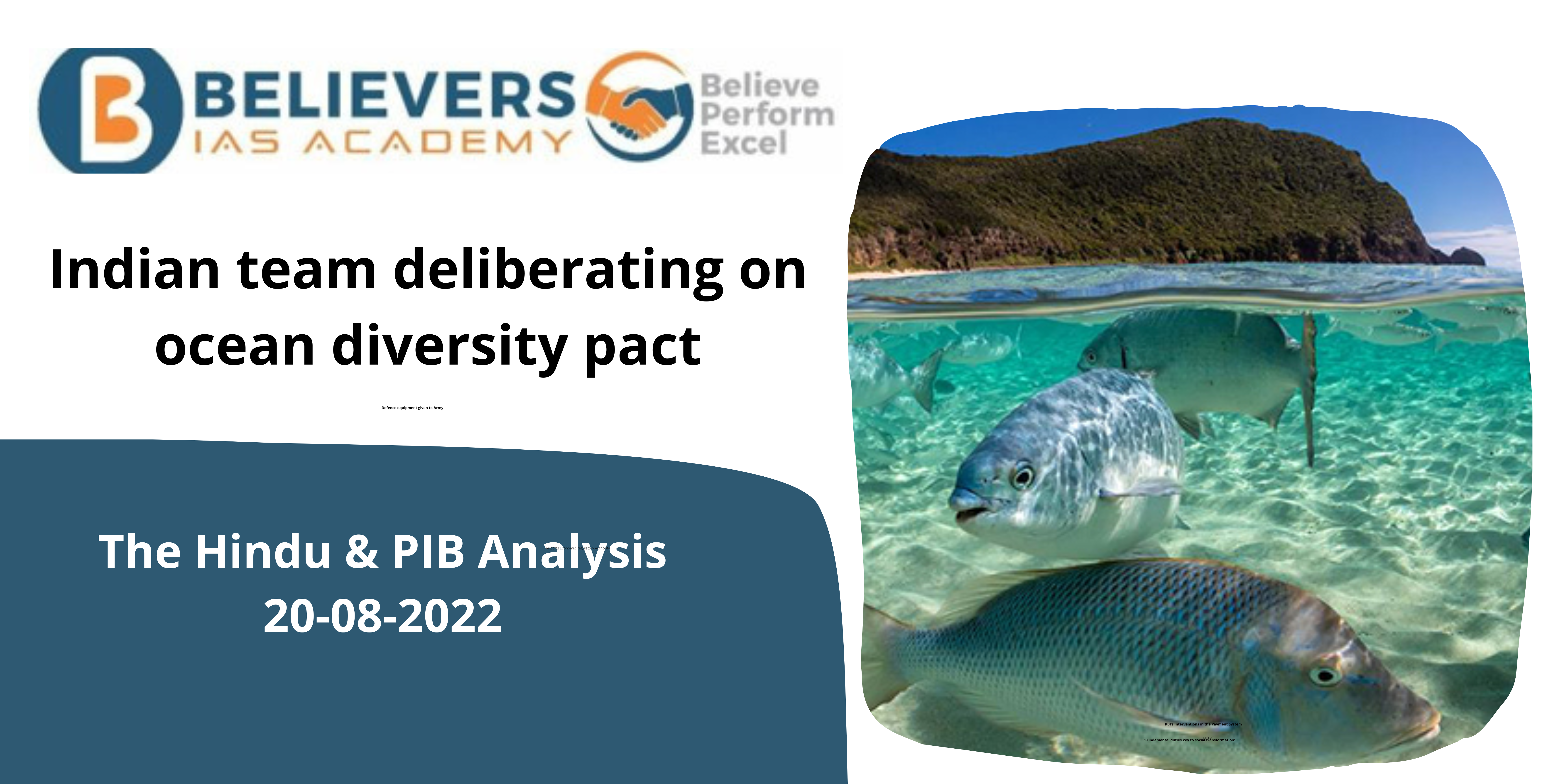Indian team deliberating on ocean diversity pact
For Prelims
About UNCLOS:
- The United Nations Convention on the Law of the Sea was adopted in 1982.
- It lays down a comprehensive regime of law and order in the world’s oceans and seas establishing rules governing all uses of the oceans and their resources.
- The Convention also provides the framework for further development of specific areas of the law of the sea.
- 167 countries and the European Union are parties to the convention.
- The convention divides the aquatic regions into the following zones;
- Internal waters: Covers all water and waterways on the landward side of the baseline. The coastal state is free to set laws, regulate use, and use any resource. Foreign vessels have no right of passage within internal waters.
- Territorial waters: Out to 12 nautical miles from the baseline, the coastal state is free to set laws, regulate use, and use any resource. Vessels were given the right of innocent passage through any territorial waters, with strategic straits allowing the passage of military craft as transit passage.
- Contiguous zone: Beyond the 12-nautical-mile (22 km) limit, there is a further 12 nautical miles (22 km) from the territorial sea baseline limit, the contiguous zone. Here a state can continue to enforce laws in four specific areas (customs, taxation, immigration, and pollution) if the infringement started or is about to occur within the state’s territory or territorial waters.
- Exclusive economic zones (EEZs): These extend 200 nmi (370 km; 230 mi) from the baseline. Within this area, the coastal nation has sole exploitation rights over all natural resources.
- The area outside these areas is referred to as the “high seas”
About Biological diversity of areas Beyond National Jurisdiction (BBNJ):
- The United Nations General Assembly decided, in 2015, to develop an international legally binding instrument under UNCLOS on the conservation and sustainable use of marine biological diversity in areas beyond national jurisdiction.
- At its seventy-second session in 2017, the United Nations General Assembly decided to convene an intergovernmental conference (IGC), with a view to developing the instrument as soon as possible.
- The first session of the Intergovernmental Conference was convened from 4 to 17 September 2018 and the second session from 25 March to 5 April 2019, at the United Nations Headquarters in New York.
The Conference addressed the following topics:
- The conservation and sustainable use of marine BBNJ;
- Marine genetic resources, including questions on benefit-sharing (MGR);
- Area Based Management Tools (ABMT), including marine protected areas;
- Environmental impact assessments (EIA); and
- Capacity-building and the transfer of marine technology (CB&TMT).
Source: THE HINDU




